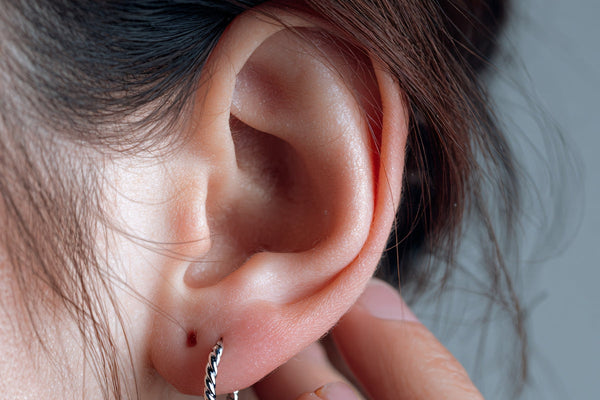
Ear wax build-up is one of the most common causes of temporary hearing loss and ear discomfort. While earwax (also called cerumen) is completely natural and even protective, too much of it can lead to blocked ears, muffled hearing, or a full sensation in the ear.
At Leightons, we know that blocked ears can be frustrating and even affect your day-to-day confidence. The good news is that it’s a simple problem to solve. Our qualified audiologists offer safe, gentle, and effective earwax removal using clinically approved methods that restore comfort and clarity quickly.
What is ear wax and why do we have it?
Ear wax is a natural substance produced by glands in your ear canal. Its purpose is to protect and clean your ears. It traps dust, debris, and bacteria, preventing them from reaching the eardrum, and helps maintain the ear’s delicate balance of moisture.
Normally, ear wax moves out of the ear on its own as part of the body’s natural cleaning process. However, sometimes it can become hard or build up faster than it can leave the ear canal, leading to blockage or discomfort.
Ear wax is not a sign of poor hygiene - in fact, it’s a sign your ears are working properly. Problems only occur when it becomes impacted or prevents sound from passing through the ear canal.
What causes ear wax build-up?
Everyone produces ear wax, but some people are more prone to build-up than others. Common causes include:
· Using cotton buds or similar objects - these often push wax deeper into the ear rather than removing it.
· Wearing hearing aids or earplugs - these can block the ear canal and stop wax from coming out naturally.
· Narrow or curved ear canals - some people’s anatomy makes it harder for wax to exit the ear.
· Skin conditions like eczema or psoriasis - can cause dry, flaky wax that’s more likely to block the ear.
· Ageing - as we get older, ear wax tends to become harder and less mobile.
Around 1 in 20 adults and up to 1 in 3 older adults experience ear wax build-up at some point. It’s one of the most common reasons people visit an audiologist.
Common symptoms of ear wax build-up
A small amount of ear wax is normal, but when it becomes impacted, you might notice symptoms such as:
· A blocked or full feeling in one or both ears
· Muffled or reduced hearing
· Ringing or buzzing (tinnitus)
· Earache or discomfort
· Dizziness or balance issues
· Coughing, caused by nerve stimulation in the ear
If these symptoms sound familiar, it’s important not to try removing the wax yourself. Inserting cotton buds, hairpins, or other objects can make the problem worse and even damage your ear canal or eardrum.
How to remove ear wax safely
Your ears are self-cleaning, but when wax becomes blocked or impacted, professional removal is the safest option. At Leightons, our audiologists use gentle, effective methods tailored to your needs:
· Microsuction - A quick, comfortable procedure that uses a fine suction device to gently remove wax. It’s safe, precise, and doesn’t involve water.
· Irrigation - A gentle flow of warm water is used to flush out softened wax (suitable for certain patients following a consultation).
· Manual removal - Specialist tools can remove stubborn wax safely when other methods aren’t suitable.
Each appointment includes an ear health check before treatment, ensuring your ears are healthy and ready for wax removal. Most people notice an instant improvement in hearing and comfort after their appointment.
Home remedies - what’s safe and what to avoid
While over-the-counter ear drops can help soften wax, they may not remove it completely. Always follow the product’s instructions and avoid using drops if you have a perforated eardrum or ear infection.
Avoid inserting objects into your ears, and never use ear candles, as these can cause burns and make the blockage worse.
If you often experience wax build-up, regular ear health checks can help prevent it from becoming uncomfortable or affecting your hearing.
Why choose professional ear wax removal at Leightons?
At Leightons, we combine expert clinical care with a gentle touch. Our qualified audiologists provide:
· Safe, comfortable procedures using modern techniques
· Professional assessment of your ear health before and after treatment
· Instant results, with most people noticing clearer hearing straight away
· Friendly, reassuring care in a clean, professional environment
If your ears feel blocked or your hearing seems muffled, don’t wait for it to get worse. Our team can help you feel clearer, more comfortable, and confident again.
Book your free hearing assessment today and discover how easy it is to take care of your hearing.








